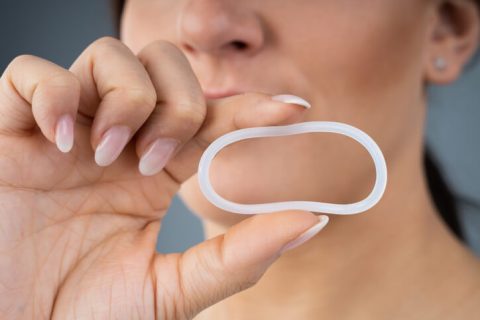NuvaRing Lawsuits
Merck & Co. settled all claims over its hormone-infused NuvaRing birth control implant in 2014. Plaintiffs in nearly 2,000 lawsuits alleged serious injuries and deaths from blood clots, heart attacks and strokes.
Our content is developed and backed by respected legal, medical and scientific experts. More than 30 contributors, including product liability attorneys and board-certified physicians, have reviewed our website to ensure it’s medically sound and legally accurate.
legal help when you need it most.
Drugwatch has provided people injured by harmful drugs and devices with reliable answers and experienced legal help since 2009. Brought to you by Wilson & Peterson LLP, we've pursued justice for more than 20,000 families and secured $324 million in settlements and verdicts against negligent manufacturers.
More than 30 contributors, including mass tort attorneys and board-certified doctors, have reviewed our website and added their unique perspectives to ensure you get the most updated and highest quality information.
Drugwatch.com is AACI-certified as a trusted medical content website and is produced by lawyers, a patient advocate and award-winning journalists whose affiliations include the American Bar Association and the American Medical Writers Association.
About Drugwatch.com
- 15+ Years of Advocacy
- $324 Million Recovered for Clients
- 20,000 Families Helped
- A+ BBB Rating
- 4.9 Stars from Google Reviews
Testimonials
I found Drugwatch to be very helpful with finding the right lawyers. We had the opportunity to share our story as well, so that more people can be aware of NEC. We are forever grateful for them.
- Medically reviewed by Tess Schulman, Ph.D.
- Last update: June 6, 2025
- Est. Read Time: 5 min read
NuvaRing Lawsuits Latest Updates
Merck agreed to settle 2,198 lawsuits for $100 million in 2014. A federal panel closed the NuvaRing multidistrict litigation in 2022. As of January 2026, Drugwatch is unaware of any attorneys currently accepting NuvaRing lawsuits.
-
November 2022
Litigation has been closed and no new cases have been filed.
-
April 2019
The U.S. Judicial Panel on Multidistrict Litigation reported 89 cases were still pending.
-
July 2014
The time period for claimants to opt-in to the settlement ended.
-
June 2014
The settlement was finalized.
-
February 2014
Merck agreed to a $100 million settlement to resolve all remaining lawsuits and claims not yet filed.
-
March 2009
A total of 215 state lawsuits were consolidated into a multicounty litigation (MCL) in New Jersey.
-
August 2008
The first 11 of 1,983 eventual lawsuits were combined in a federal multidistrict litigation (MDL).
Woman Developed Life-Threatening Blood Clots
World-class athlete Megan Henry started using NuvaRing birth control 10 days before she found herself gasping for air on the side of a mountain in 2012. At the time, she didn’t know that NuvaRing had caused her to develop dangerous blood clots. She later joined others who sued NuvaRing’s maker, Merck & Co., alleging the device caused life-threatening injuries.
A member of the U.S. Army’s elite Soldier-Athlete Program, Henry was training for the 2014 Winter Olympics in the skeleton – a bare-bones sled that screams down slopes at 80 mph—when she found herself battling a sudden shortness of breath.
“It was like an elephant was sitting on my chest all the time,” she told CNN.
It didn’t get better. She visited six doctors who told her it was asthma or stress or the effects of breathing the thin mountain air. Finally, a pulmonologist ordered a CAT scan. It showed multiple pulmonary embolisms, or blood clots blocking her lungs.
Rushed to the hospital, the aspiring Olympian was put on a breathing machine. She was told her athletic career was over, and if she had not been in the peak physical condition required of a world-class athlete, she likely would have died.
As a result of her injuries, Henry will face a higher risk of recurring pulmonary embolisms for the rest of her life. She can never take hormonal treatments, including birth control, again. If she gets pregnant, she will have to take anticoagulant medicine to prevent blood clots.
Henry’s experience in 2012 had already been repeated with hundreds of other women since at least 2005. Studies have found the progestin used in NuvaRing can increase the risk of a blood clot called venous thromboembolism (VTE) by as much as 6.5 times.
One type of VTE known as deep vein thrombosis (DVT) occurs when a blood clot forms in the body’s large veins. Pulmonary embolism (PE) can happen if a DVT breaks loose, travels to the lungs and stops blood flow. This can be fatal.
In October 2013, Merck & Co. Inc., added a warning about an increased risk of blood clots to the contraceptive’s label. By that time, hundreds of lawsuits were piling up against Merck subsidiary Organon BioSciences.
Lawsuits Point to Blood Clots, Heart Attacks, Strokes and Deaths
As NuvaRing users experienced VTEs, there were mounting questions about whether the contraceptive’s manufacturers should have known about the risk and warned women about it.
Following a rising tide of deaths and serious injuries from VTEs, heart attacks and strokes, women or their surviving family members began filing lawsuits against the manufacturers. Their stories were often similar: healthy women who used NuvaRing and suffered severe medical complications or death.
Janis Mitchell-McGuire, for example, started using the birth control in 2004. Then 28, she suffered a PE just six months later, had to be hospitalized twice, and was prescribed anticoagulation medications to prevent further clotting. She filed a lawsuit against Merck in 2008.
LaMonica Green was 17 years old when she started using NuvaRing in 2009. Within weeks, she suffered a PE and died. Her mother filed a wrongful death lawsuit.
Dana Jenn, a long-distance runner with no history of blood clots, suffered a sudden shortness of breath and collapsed on a treadmill during a workout in 2005. Hours later, the 40-year-old would die of a PE. Sarah Jenn, Dana’s daughter, filed a lawsuit in 2007.
“This lawsuit wasn’t about punishing anyone or any kind of personal gain. I thought it was important to add her voice to all the other women who had a bad outcome from this drug.”
In all, women or their families filed more than 2,100 lawsuits in state and federal courts. They alleged the manufacturer failed to adequately test etonogestrel — the progestin hormone in NuvaRing. They also claimed the company based safety information on oral contraceptive studies alone.
FDA Raises Safety Questions Before Approving NuvaRing
The U.S. Food and Drug Administration had questioned the safety of NuvaRing prior to approving it in 2001. A review said the increased risk of VTE was “the most controversial safety issue.” The risk was compared to oral contraceptives using similar hormones as NuvaRing.
“There remains considerable concern in the literature over an increased risk of VTE events with desogestrel-containing oral contraceptives,” Dr. Daniel Davis, the medical officer who authored the report for the FDA, wrote in 2001. “With approval of this product, the label should clearly reflect the safety concern about an increased risk of VTE.”
The FDA decided the warning was not necessary when it granted approval for NuvaRing later that year. NuvaRing’s label did not include a warning about VTE and cardiovascular risks until October 2013.
Shortly after the NuvaRing settlement in 2014, the American Heart Association recommended that women considering oral contraceptives get screened for high blood pressure because it can increase the risk of blood clots and stroke.
Merck Settles Claims for $100 Million
In February 2014, Merck & Co. agreed to settle all claims against the company for $100 million. The settlement was finalized in June 2014. Roughly 3,800 people were eligible for a portion of the settlement – including those who filed lawsuits and those whose claims had not been filed in court.
To be eligible to enroll in the settlement, claimants had to have alleged an injury due to NuvaRing prior to Feb. 7, 2014. Eligible plaintiffs then had to submit a notice of intent to opt-in form and a completed claim package before deadlines set by the court in Missouri.
The final deadline to enroll was extended to July 21, 2014. The claim package had to include documentation of injuries, a patient’s NuvaRing prescription records and an authorization to release medical records and other information.
Some Opt Out of Settlement
Not all the claimants opted into the settlement. Among those who chose not to take part in the settlement were the parents of Erika Langhart.
Langhart collapsed with severe chest pains and suffered two heart attacks as paramedics worked to get her to a hospital. She died on Thanksgiving Day in 2011 from a pulmonary embolism.
“Shame on them,” Langhart’s father, Rick, told the Durango Herald in Colorado in 2014. “This settlement agreement, orchestrated by Merck and the attorneys on both sides, driven by their own greed, has all but eliminated the chance for Merck to be taken to trial.”
In opting out of the settlement, Rick and Karen Langhart chose instead to pursue a separate trial over their daughter’s death. But a San Francisco court dismissed their case on Sept. 10, 2016.
Ericka Langhart was a recent graduate of American University in Washington, D.C. when she died. She and Megan Henry were friends. Henry discussed the Merck settlement with Salt Lake City television station KSTU in 2015.
“People who lost their daughters or wives, the compensation [was] $74,000, which may sound like it’s a lot of money but not for someone’s life,” Henry said.
Calling this number connects you with a Drugwatch.com representative. We will direct you to one of our trusted legal partners for a free case review.
Drugwatch.com's trusted legal partners support the organization's mission to keep people safe from dangerous drugs and medical devices. For more information, visit our partners page.






